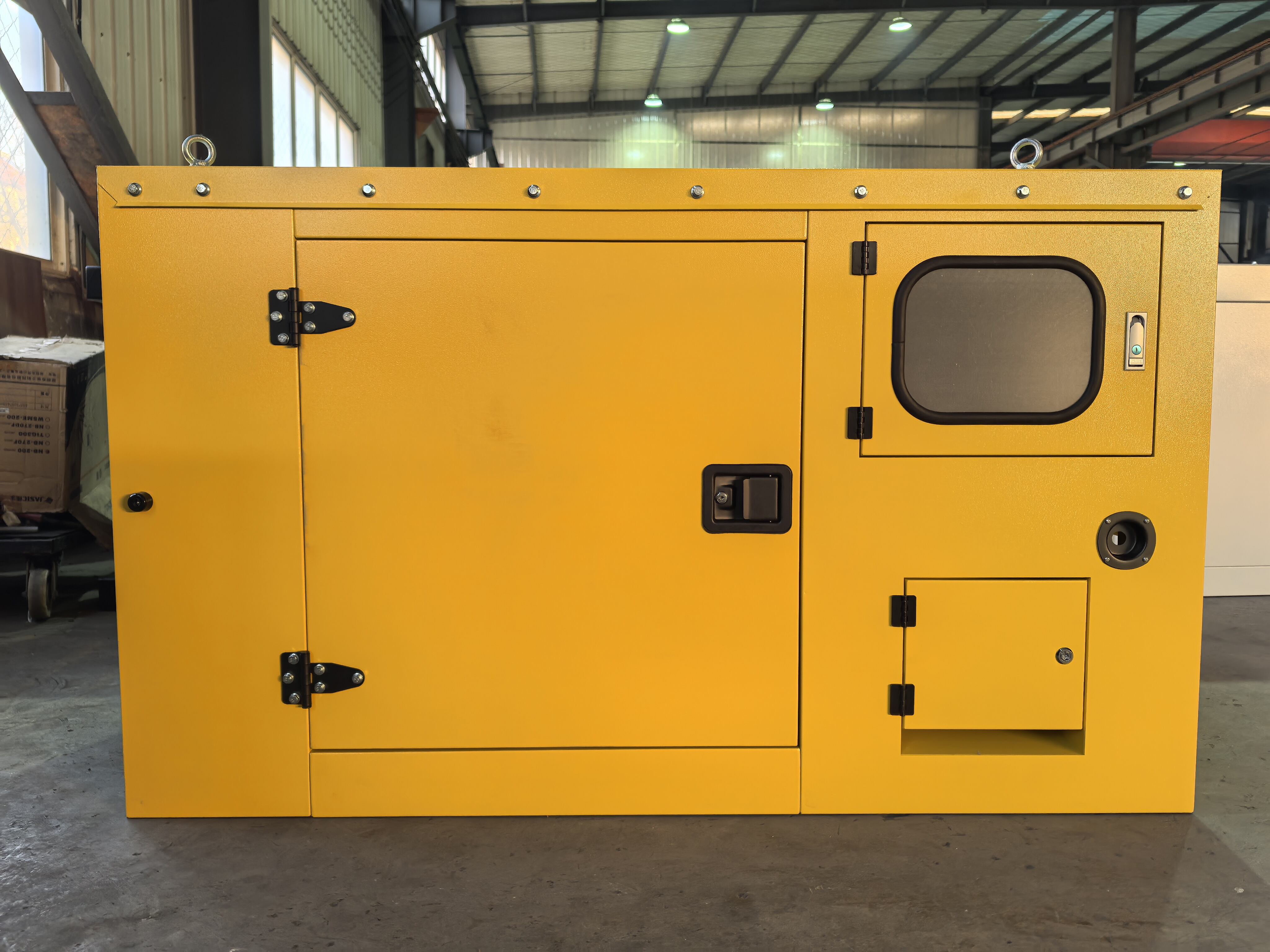Ildamroq vibratsiya boshqaruvi orqali generator ishlashini maksimal darajada oshirish
O'rnatish o'ngirishsiz dizel generator optimal ishlashni ta'minlash va shovqin hamda vibratsiya darajasini minimal darajada saqlash uchun ehtimolli rejalashtirish va mutaxassislarning ishtirokini talab qiladi. Siz o'z uy yoki sanoat quvvat yechimini joriy etishda, uskunangizning umrining uzaytirilishi va atrof-muhitning qulayligi uchun to'g'ri vibratsiya izolyatsiyasi juda muhim. Zamonaviy ovozsiz dizel generatorlarning o'rnatilishi sezilarli darajada rivojlangan bo'lib, mexanik tebranishlarni va tuzilma shovqinini samarali kamaytiruvchi murakkab so'nmashtirish texnologiyalarini o'z ichiga oladi.
To'g'ri vibratsiya izolyatsiyasining ta'siri faqat qulaylikdan ancha uzoqroq - bu bevosita generatoringizning samaradorligi, texnik xizmat ko'rsatish talablari va umumiy foydalanish muddatiga ta'sir qiladi. Turli sohalarda energiya ehtiyojlari o'sib borgan sari, yanada tinchroq, barqarorroq generator o'rnatishlari talabi hech qachon shunchalik yuqori bo'lmagan. Haqiqatan ham ovozsiz dizel generator o'rnatishini amalga oshirishga yordam beradigan vibratsiya izolyatsiyasining asosiy jihatlari bilan tanishamiz.
Tayanch va poydevor tayyorgarligining asoslari
Beton plitalar talablari va xususiyatlari
Sizning ovozsiz dizel generator o'rnatishingiz asosi to'g'ri loyihalangan beton plitadan boshlanadi. Ushbu asos mukammal tekis, etarli darajada o'lchamlangan va generator og'irligini hamda ish jarayonidagi kuchlarni qo'llab-quvvatlash uchun yetarlicha mustahkamlangan bo'lishi kerak. Sanoat standartlari uy uchun kamida 6-8 dyuym, sanoat ehtiyojlari uchun esa 12-16 dyuym qalinlikdagi beton plita tavsiya etadi. Barqaror qo'llab-quvvatlash va og'irlikni to'g'ri taqsimlashni ta'minlash uchun plita generatorning barcha tomonlaridan kamida 12 dyuym chiqib turishi kerak.
Beton aralashma xususiyatlari fondning barqarorligida muhim rol o'ynaydi. Kamida 4000 PSI siqilish chidamliligiga ega yuqori mustahkamlikdagi betondan foydalaning va armatura panjara yoki sim tormoz kabi mos mustahkamlash vositalarini qo'shing. Yuzasi silliq, lekin texnik xizmat ko'rsatish paytida sirpanishni oldini olish uchun etarli darajada mat tuzilishga ega bo'lishi kerak. Maksimal konstruktiv butunlikni ta'minlash uchun ovozsiz dizel generatorni o'rnatishdan oldin betonning to'liq qotishiga yetarli vaqt ajrating.
Tuproq tahlili va maydonni tayyorgarlik
Beton plitani quyishdan oldin tuproqning barqarorligi va yuk ko'tarish qobiliyatini aniqlash uchun batafsil tuproq tahlili o'tkazish zarur. Turli tuproq turlari asosni tayyorlash bo'yicha turlicha yondashuvni talab qiladi. Qumli tuproqlarni qo'shimcha siqish talab qilishi mumkin, shershakli tuproqlarda esa suv to'planishini oldini olish uchun maxsus drenaj echimlari kerak bo'lishi mumkin. Mutaxassislarning geotexnik tekshiruvi kelajakda katta xarajatlarga sabab bo'lishi mumkin bo'lgan muammolarni oldindan aniqlash imkonini beradi.
Maydonni tayyorgarlikka to'g'ri drenaj rejasi kiritilishi kerak, shunda suv generator asosidan uzoqlashib ketadi. Agar kerak bo'lsa, fransuz drenaji yoki sirtning qiyaligini sozlash kabi yer osti suvi boshqaruv tizimlarini o'rnatish kerak. Bu oldini oluvchi chora-silsila sizning ovozsiz dizel generatoringizni ehtimoliy suv zararidan hamda asosning cho'zilish muammolaridan himoya qiladi.
Ildizlantirishni kamaytirishning ilg'or texnologiyalari
Prujinali izolyator tizimlari
Yopiq dizel generator o'rnatmalari uchun tebranishni boshqarishning eng samarali yechimlaridan biri bu prujinali izolyatorlardir. Ushbu murakkab qurilmalar mexanik energiyani so'rish va tarqatish uchun aniq kalibrlangan po'lat prujinalardan foydalanadi. Zamonaviy prujina izolyatorlari to'g'ri tanlangan va o'rnatilgan taqdirda tebranishni izolyatsiya qilish samaradorligini 98% gacha yetkazishi mumkin. Muhimi, sizning maxsus generatoringiz modeliga mos keladigan to'g'ri qattiklik darajasi va defleksiya xususiyatlariga ega prujinalarni tanlashdir.
Turli turdagi prujina izolyatorlari turli maqsadlarga xizmat qiladi. Ochiq prujina izolyatorlari vertikal tebranishni boshqarishda a'lo natija beradi, shu bilan birga, qoplangan prujina izolyatorlari yon tomonga ta'sir etuvchi kuchlarga qarshi qo'shimcha himoya beradi. Ayrim ilg'or tizimlar prujinaning rezonansini oldini olish uchun ichki so'nmas mexanizmlarni o'z ichiga oladi va turli ish rejimlarida barqaror ishlashni ta'minlaydi.
Elastomer Qo'llab-quvvatlash Yechimlari
Elastomerik o'rindiqlar mexanik energiyani yutish uchun mo'ljallangan maxsus rezina aralashmalari orqali vibratsiyani izolyatsiya qilishning yana bir qatlamini ta'minlaydi. Bu o'rindiqlar prujinali izolyatorlar o'tkazib yuboradigan yuqori chastotali tebranishlarni so'ndirishda a'lo bajariladi. Eng so'nggi elastomer materiallari yaxshilangan chidamlilik va atrof-muhit omillariga chidamli bo'lib, sizning ovozsiz dizel generatoringiz tizimida uzoq muddatli ishlashni ta'minlaydi.
To'g'ri elastomerik o'rindiqni tanlash shore qattikligi, siqilishga chidamlilik va dinamik qattiklik kabi omillarga bog'liq. Ba'zi o'rnatishlar butun chastota spektri bo'ylab tebranishni boshqarishni maksimal darajada oshirish uchun elastomer elementlarni prujinali izolyatorlar bilan birlashtiruvchi g'ildirak echimlardan foyda olishadi.
O'rnatish bo'yicha eng yaxshi amaliyotlar va usullar
To'g'ri o'rnatish protseduralari
Sizning o'z yonilg'i generatori o'rnatilishining muvaffaqiyati aniq o'rnatish protseduralariga qat'iy rioya qilishga bog'liq. Barcha o'rnatish nuqtalarini mukammal tekislashdan boshlang - hatto kichik noto'g'ri tekislanish ham tebranishni izolyatsiya qilish samaradorligini pasaytirishi mumkin. Belgilangan bolt kuchlanishlariga erishish uchun kalibrlangan moment kalitlaridan foydalaning va barcha o'rnatish nuqtalari bo'ylab to'g'ri yuk taqsimotini amalga oshiring.
Aloqada tebranishlarni nazorat qilish talab etiladigan o'rnatishlar uchun suzuvchi pol tizimlarini joriy etishni ko'rib chiqing. Bu tizimlar generator bilan binoning konstruksiyasi orasida qo'shimcha izolyatsiya to'sig'ini yaratadi, shunda shovqin va tebranish uzatilishi yanada kamayadi. Har doim o'rnatish jihozlari sizning alohida generator modeli uchun ishlab chiqaruvchining ko'rsatmalari bilan mos kelishini yoki ularni oshirishini tekshiring.
Havolanish va Muvozanatni Optimallashtirish
Sizning ovozsiz dizel generatoringizda tebranishni kamaytirish uchun barcha aylanuvchi komponentlarning to'g'ri tekislash juda muhim. Dvigatel va alternator o'rtasidagi mukammal uzatmani ta'minlash uchun lazerli tekislash vositalaridan foydalaning. Muntazam muvozanat tekshiruvi va sozlamalari zararli tebranish namunalari rivojlanishini oldini oladi, bu izolyatsiya tizimingizga ta'sir qilishi mumkin.
Turli yuklama darajalarida tebranish tahlilini o'z ichiga olgan keng qamrovli komissiyaga topshirish protsedurasini amalga oshiring. Bu ma'lumotlar kelajakdagi texnik xizmat ko'rsatish uchun dastlabki nuqta bo'lib xizmat qiladi va jiddiy muammolarga aylanishidan oldin potentsial muammolarni aniqlashga yordam beradi. Kelajakda foydalanish uchun barcha tekislash o'lchovlari va muvozanat sozlamalarini hujjatga tushiring.
Texnik xizmat ko'rsatish va nazorat qilish protseduralari
Muntazam Tekshiruv Bo'yicha Ko'rsatmalar
Sizning ovozsiz dizel generatoringizni optimal ishlashini saqlash uchun barcha vibratsiyani izolyatsiya qiluvchi komponentlarni tizimli tekshirish talab etiladi. Yeyilish, yemirilish yoki noto'g'ri joylashish belgilarini aniqlash maqsadida vizual tekshiruvlarni o'z ichiga olgan muntazam ta'mirlash jadvalini tuzing. Mahkamlagich qismlarning mahkamliligi hamda elastomer komponentlarning holatiga alohida e'tibor bering.
Tizim ishlashidagi o'zgarishlarni vaqt o'tishi bilan kuzatish uchun zamonaviy vibratsiya monitoring uskunalardan foydalaning. Ko'plab ob'ektlar hozirda vibratsiya darajasini doimiy kuzatuvchi tizimlarni joriy etishmoqda, bu esa uskunaga zarar yetishidan oldin xodimlarga potentsial muammolarni aniqlash imkonini beradi.
Oldindan himoya qilish strategiyalari
Vibratsiyani boshqarish komponentlariga qaratilgan batafsil oldini olish dasturini ishlab chiqing. Izolyatsiya etuvchi tayanchlarni muntazam tozalash, prujinali elementlarni tekshirish hamda to'g'ri bo'shliqlarni tekshirishni o'z ichiga oling. Komponentlarning ishdan chiqishini kutmasdan, ularni o'z vaqtida almashtiring.
Sifatli dizel generatorning vibratsiya izolyatsiya tizimining samaradorligini saqlab, to'xtash va ta'mirlash xarajatlarini minimal darajada ushlab turish uchun batafsil texnik xulosa yuriting va tendentsiyalarni tahlil qiling. Bu ma'lumotlarga asoslangan yondashuv xizmat ko'rsatish muddatlarini optimallashtirish va ehtimoliy muammolarni oldindan bashorat qilishga yordam beradi.
Koʻpincha soʻraladigan savollar
Vibratsiya izolyatsiyasi komponentlarini qancha tez-tez tekshirish kerak?
Tijorat ob'ektlarida vibratsiya izolyatsiyasi komponentlarini har chorakda, uy-joy ob'ektlarida esa har yilda ikki marta mutaxassislarning tekshirishi o'tkazilishi kerak. Biroq, kuzatiladigan aushezlarni yoki shikastlanish belgilarini payqab olish uchun har oyda vizual tekshiruv o'tkazilishi kerak. Agar generator qattiq sharoitlarda ishlashi yoki doimiy ravishda ishlashi kutilayotgan bo'lsa, tekshiruv chastotasini oshirish kerak.
Vibratsiya izolyatsiyasiga e'tibor berilishini talab etadigan belgilari qanday?
Asosiy ko'rsatkichlarga ishlayotgan paytda ovoz darajasining oshishi, generatorning ko'rinadigan harakati yoki siljishi, montaj maydonchasida yoki atrof-tingov tuzilmada troshinkalar, noaniq tebranish namunalari kiradi. Shuningdek, rezina qismlarning yemirilishi, montaj jihozlarining loyqalashishi yoki generator ishlash ko'rsatkichlaridagi o'zgarishlarni kuzatib boring.
Mavjud generator o'rnatishlarini yaxshiroq tebranishdan himoya qilish tizimlari bilan yangilash mumkinmi?
Ha, aksar sovunchi dizel generator o'rnatishlarini yaxshilangan tebranishdan himoya qilish tizimlari bilan qayta jihozlash mumkin. Bu odatda generatorni vaqtincha ko'tarishni, montaj qismlarini yangilashni va ba'zan asosni mustahkamlashni o'z ichiga oladi. Mutaxassislarning baholashi to'xtashlarni minimal darajada saqlab, eng samarali yangilash usulini aniqlashga yordam beradi.
Mundarija
- Ildamroq vibratsiya boshqaruvi orqali generator ishlashini maksimal darajada oshirish
- Tayanch va poydevor tayyorgarligining asoslari
- Ildizlantirishni kamaytirishning ilg'or texnologiyalari
- O'rnatish bo'yicha eng yaxshi amaliyotlar va usullar
- Texnik xizmat ko'rsatish va nazorat qilish protseduralari
- Koʻpincha soʻraladigan savollar

